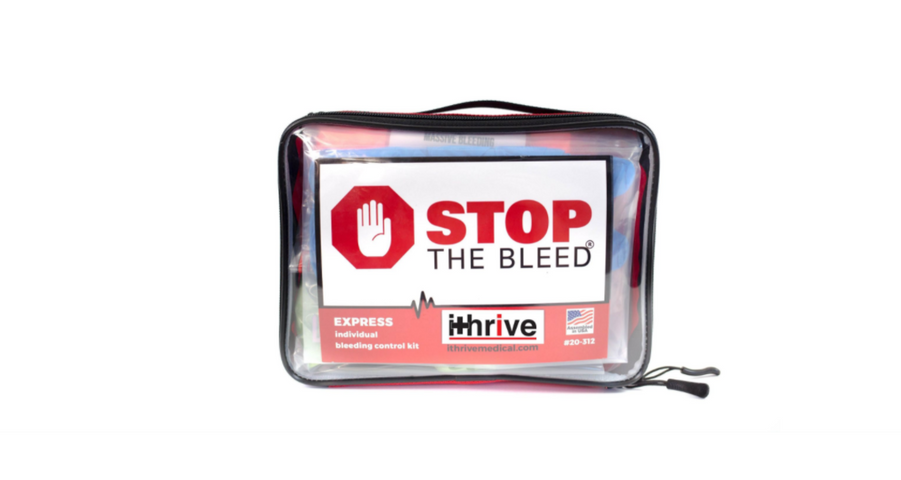Frequently Asked Questions About Stop the Bleed® Kits

An emergency situation requires immediate action to save lives. This is especially true when an injury involves serious bleeding, because some bleeds can become fatal in less than 5 minutes. Stop the Bleed® kits were developed to be used by ordinary people who find themselves in extraordinary situations where another person's life is on the line. Here's a guide to the basic information you should know about them.
What to Know About Stop the Bleed Kits
What's contained in these kits?
Bleeding control kits include tourniquets, which are used to stop massive bleeding from limbs. Kits also contain gauze and pressure dressings to be used in areas where tourniquets cannot, such as the shoulder, arm pit, neck and groin area.
Gloves are provided to protect yourself from blood-borne pathogens, while shears allow you to quickly remove clothing to administer first aid. More advanced kits may carry a hemostatic gauze for extra bleeding control support, or a mylar warming blanket to prevent hypothermia and Hemorrhagic shock, which is common with heavy blood loss.
Who can use them?

Anyone can use Stop the Bleed kits. They're designed to be used by people without medical training, which buys you time until help arrives. Regardless of their ease of use, all people should still undergo first-aid training to learn how to administer other life-saving treatments, such as CPR.
What steps should I take in an emergency?
Kits come with instructions to help you use them correctly. The 911 operator can also provide instructions while you're on the phone waiting for help to arrive.
Once you've ensured your own safety and called emergency services, locate the source of the bleeding. If necessary, remove clothing to access the area, and using gauze, firmly apply pressure to slow the bleeding. Use a tourniquet on the limbs, if bleeding does not slow down with simple pressure.
Where can I find a bleeding control kit in public?
All people are encouraged to carry their own kits in the event of an emergency. However, they can also be found in public places in the event you do not have one accessible at the time of the emergency. They're often stored in the same cabinets as the automated external defibrillator (AED) and will be marked clearly for immediate identification.
While you can't always avoid emergency medical situations, you can be prepared for them. Think Trauma Kits gives people the tools they need to act quickly and effectively in a life-or-death situation. In addition to bleeding control kits, they provide defibrillators, mass casualty kits, business and family trauma kits, and first aid supplies. If you'd like to receive comprehensive first aid training, they also offer classes led by experienced instructors. Visit the website to see their bleeding control kits. For any special orders, customization, government organization/quantity discounts, or first-aid treatment questions, get in touch. They can help!
About the Business
Have a question? Ask the experts!
Send your question

